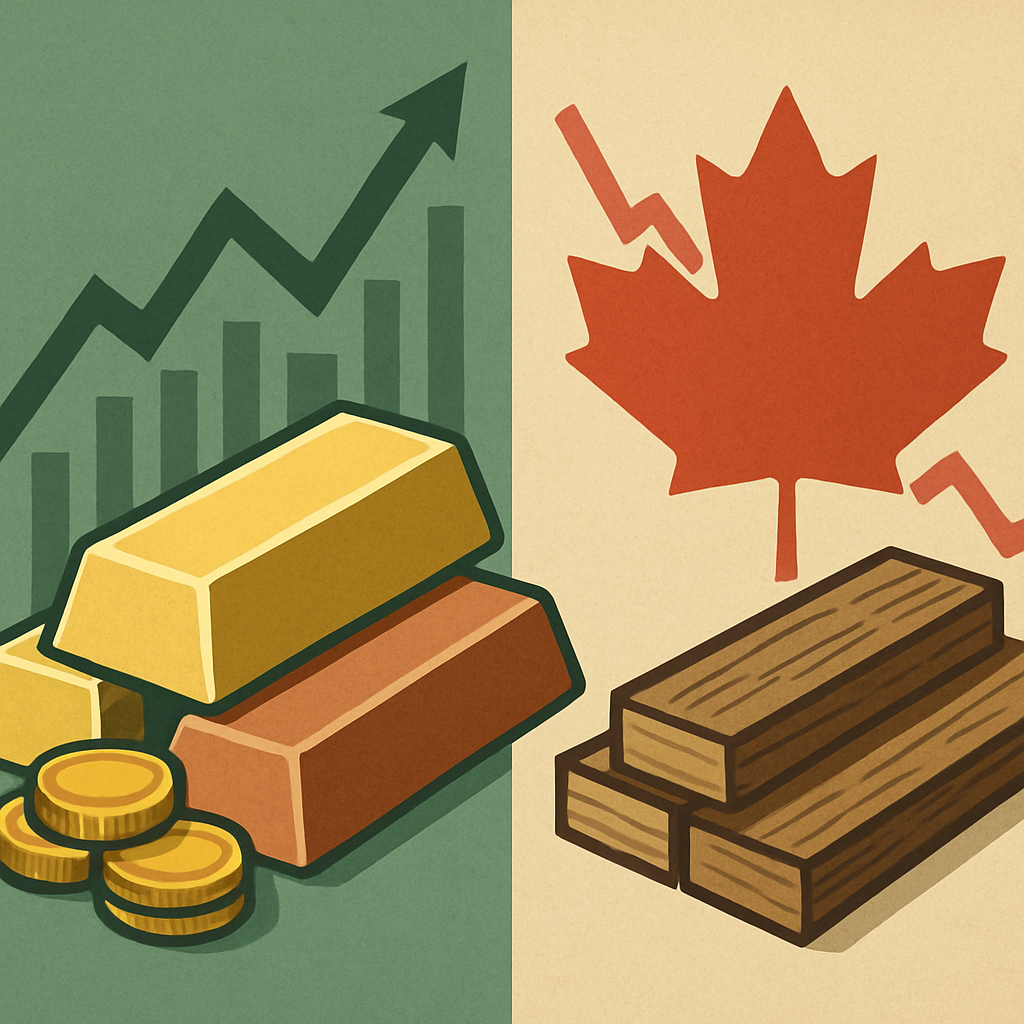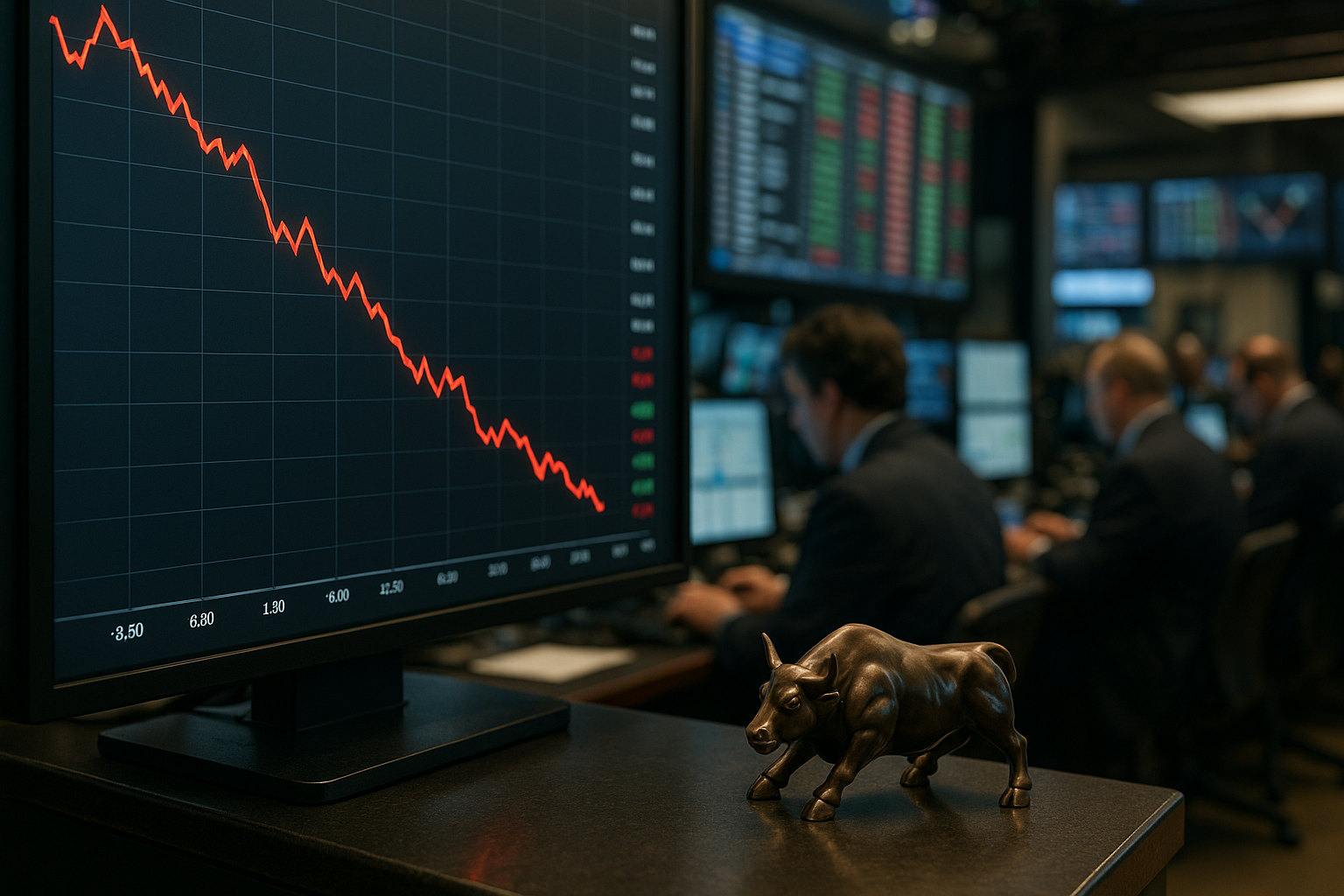Markets are turning increasingly bullish on commodities as dovish signals from the U.S. Federal Reserve converge with strategic fiscal action north of the border. As copper and gold respond to monetary tailwinds and supply pressures, Canada’s announcement of C$1.2 billion in support for its softwood lumber sector adds another layer of momentum for resource-focused investors.
The interplay of central bank policy, global trade tensions, and national industrial strategy is reshaping investor sentiment around key metals and natural resources. These developments are reinforcing Canada’s role as a commodities powerhouse while offering near-term opportunity for well-positioned mining and energy stocks.
Commodities React to Fed Cues
Copper and gold prices began the week on a resilient note. TSX futures rose 1.6% in early Tuesday trading, lifted by investor expectations that a September rate cut from the Federal Reserve is all but locked in following softer-than-expected U.S. jobs data. The rally in Canadian markets was led by materials and energy sectors.
Gold remained elevated near two-week highs, supported by falling Treasury yields and renewed appetite for defensive assets. “The combination of cooling inflation and weak labor indicators is pushing investors back into precious metals,” said economists at Scotiabank in a note. Meanwhile, copper saw some near-term volatility, easing slightly due to supply chain concerns and uncertainty surrounding global tariff disputes, particularly between the U.S., China, and Canada.
Why This Matters for Investors
With real yields slipping and central banks signaling an end to tightening cycles, commodities are once again in focus. Gold, in particular, is seeing renewed interest not just as a hedge against inflation, but as a broader defensive asset in portfolios navigating geopolitical and macroeconomic risk.
Copper’s short-term softness is not necessarily bearish. According to a Bloomberg Intelligence report, supply constraints—driven by labor unrest in Chile and production delays in Peru—could keep inventories tight well into 2026. Long-term, the metal remains critical to global electrification, clean energy infrastructure, and AI-driven data centers.
For investors, this moment represents a compelling alignment of macro forces. With rate cuts on the table and demand for industrial metals expected to rise through 2030, the current dip could represent a buying opportunity for long-term holders.
Canada Moves to Protect Strategic Industry
Separately, the Canadian government announced a C$1.2 billion stimulus package for its embattled softwood lumber industry. The move comes in direct response to increasing pressure from U.S. tariffs and follows lobbying from British Columbia and Quebec, where sawmills have faced closures and layoffs.
“This support will help Canadian producers weather trade disputes and invest in innovation and competitiveness,” said Chrystia Freeland, Deputy Prime Minister and Finance Minister, in an official statement. Industry analysts at RBC Capital Markets noted that while short-term relief is welcome, long-term success hinges on securing a durable softwood trade agreement with the U.S.
Still, the announcement has bolstered confidence in the broader materials sector. Shares of major Canadian forestry firms like West Fraser Timber (TSX: WFG) and Canfor (TSX: CFP) ticked higher in pre-market trading on the news.
Key Investment Insight
Investors looking to diversify portfolios amid late-cycle uncertainty should revisit commodities and resource stocks. Gold and copper remain structurally bullish over the medium to long term, particularly as Fed policy pivots dovish and supply remains tight. Canadian miners and energy names offer geographically de-risked exposure compared to emerging market counterparts.
In addition, Canada’s fiscal support of the lumber industry adds a layer of policy stability that could drive upside for related equities, especially in a rising-rate-to-cut-transition phase. For those seeking ETF exposure, consider funds tracking Canadian materials (e.g., XMA.TO or HXM.TO) or precious metals like gold miners (e.g., GDX, ZGD.TO).
Stay ahead of the commodities curve and follow MoneyNews.Today for daily insights that help you turn macro signals into market advantage.





